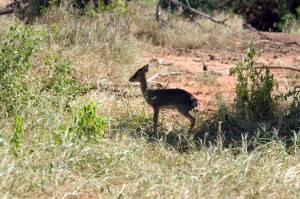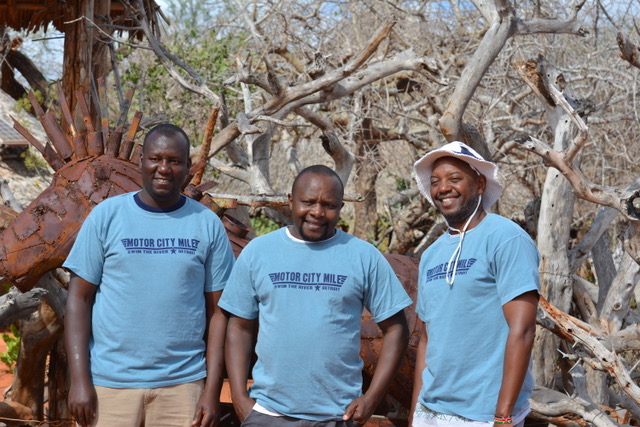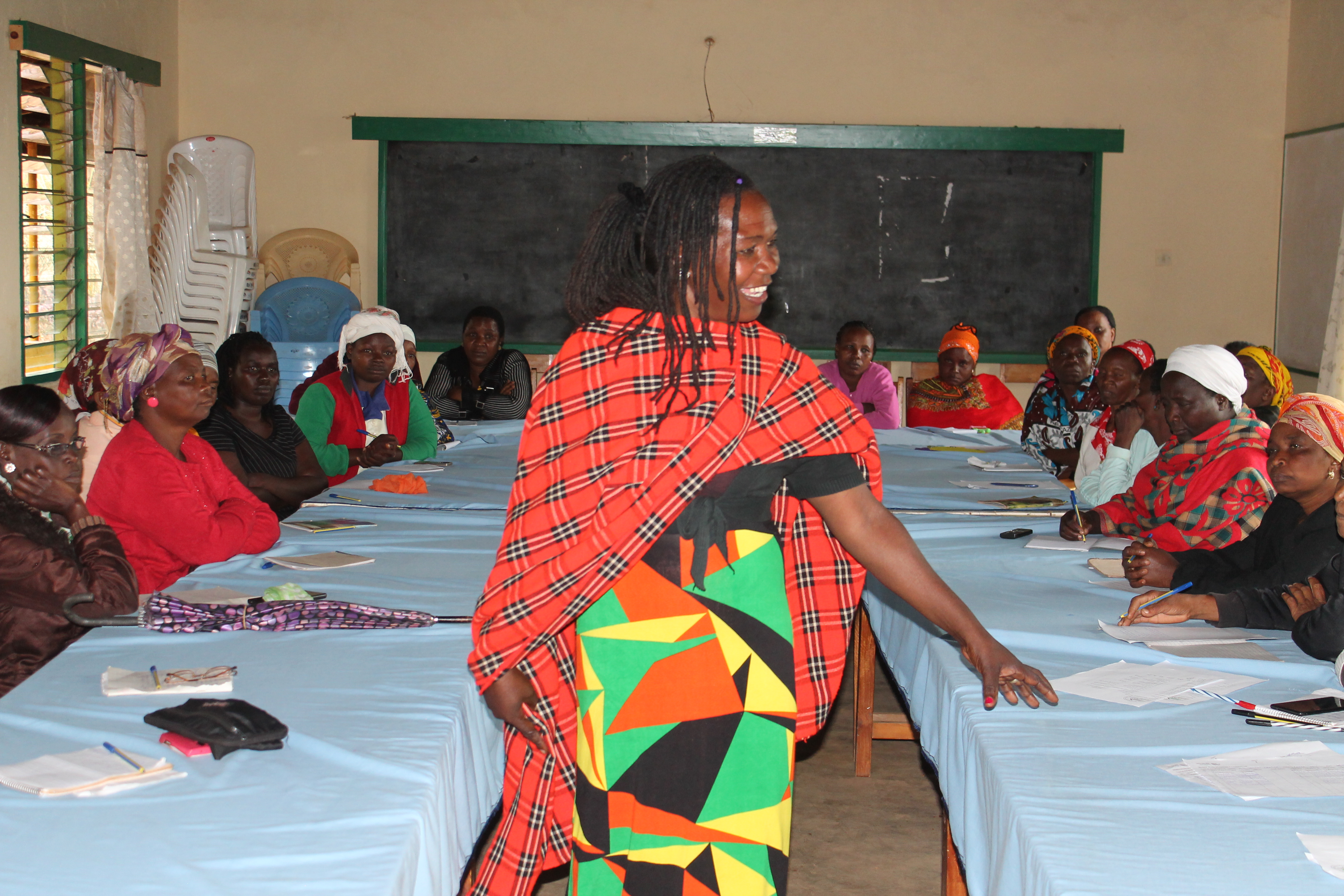Wildlife Works rangers fight against illegal ivory trade
With the increase in violence linked to the rising value of ivory, Wildlife Works’ team of rangers, led by Head Ranger and Security Manager Eric Sagwe, have been working harder than ever to curb poaching and protect wildlife. The team encountered three notable events over the past few months, from poachers killing small game for meat to a large-scale slaughter for ivory, and will continue their tireless efforts to discourage poaching and protect wildlife.
Recently, two poachers were caught killing small animals to sell as bush meat. The pair had slaughtered two dik diks and two hares using pangas (large, broad-bladed African knives used as tools or weapons) and confessed to killing the animals in order to sell the meat. One poacher said he was a quarry worker in Kuranze and had five children. The other said he was 28 with a wife and three children and worked as a carpenter.

According to one of the Wildlife Works rangers, poaching is on the rise because the punishment for poaching small animals is not harsh enough to deter people.
The two poachers were taken to the nearby town of Voi’s police station and then to court in accordance with the law. Further steps have been taken to educate community members against buying wild animal meat.
One week later, ivory poachers struck Rukinga leaving five elephants dead.
Suspicious footprints had been found within the Wildlife Works Animal Sanctuary on Wednesday, March 20th. The rangers notified Kenya Wildlife Services, and when the teams had gathered, Head Ranger Eric spoke with the KWS Company Commander to organize the tracking strategies that both groups would use to catch the potential poachers before any animals could be harmed.
The rangers spent two full days covering an area of 15 km from the Rukinga Ranch down to Talu Ranch near Mount Kasigau.
At one spot in Kasigau, rangers tracked down a place with the telltale signs of a small campfire where the poachers may have pitched camp the night before.
By Friday, some of the search teams began to wonder if the footprints spotted on Wednesday had been a ruse. Tracks left by farmers and herders who graze their livestock on some of the ranches made it difficult for the rangers to distinguish and track the poachers’ footprints. Efforts were further complicated by rain that had erased many of the tracks.
On Saturday afternoon, the rangers heard a rifle shot ricochet in the depths of Dawida Ranch. The groups came together to focus their efforts on searching the ranch, only to discover that they had been tricked! The gunshot heard from Dawida Ranch was meant to divert the rangers away from the Washumbu Ranch where the poachers had killed three male and two female elephants and removed their tusks. The poachers used the diversion to make their getaway, leaving five carcasses behind.

Rangers interviewed community members living around the Washumbu Ranch and learned that many residents had heard repeated gunshots Friday evening, but they had ignored the sounds and assumed the shots were coming from Wildlife officers engaging poachers in the park.
A KWS patrol aircraft was used to scan the Washumbu Ranch where the five carcasses were discovered almost huddled together. The poachers had clearly ambushed the elephants in a group.
Efforts to track down the poachers have been heightened and authorities have asked community members to report any information that could lead to the capture of the criminals.
This week, Wildlife Works rangers on patrol discovered an elephant carcass within the project area with its tusks intact.
Head Ranger Eric suspects that while trying to bring down the elephant using poisoned arrows, the poachers most likely spotted wildlife rangers on patrol and abandoned their efforts. Unfortunately the poor creature still died from wounds inflicted by the poachers.
After finding the carcass, the patrolling Wildlife Works rangers reported the incident to the closest station, removed the dead elephant’s tusks and brought them to the Kenya Wildlife Services office to be destroyed. The large tusks (weighing 60Kg) will be burned in government kilns to prevent them from being sold on the illegal ivory market.


Currently a somber mood hangs over the entire Wildlife Works family and the Kasigau Wildlife Corridor communities as each person mourns the loss of innocent wildlife. It is not only a Wildlife Works loss; it is a loss for the whole universe, for Mother Nature, and for you and I.
We cannot wish back the hands of time. We cannot wish for the group of five poached elephants to come back to life, nor the poisoned elephant that escaped with its tusks but not its life. We cannot sit back and watch helplessly as ruthless killers and merchants drive the African elephant to the brink of extinction.
Every one of us can do something to ensure that the killing stops and the demand for ivory ends. It all begins with you and I. Pledge to never purchase ornaments made from ivory. Say no to ivory by signing the petition at iworry.org. Sign the petition to stop the demand for ivory at change.org. Raise awareness on the plight of the African elephant. Support wildlife groups who work to protect animals and curb poaching. Help us spread our message.




One Comment
beaded animals
Tagua nut is a natural, sustainable substitute for small scale carving. It is similar in appearance and strength to animal ivory.